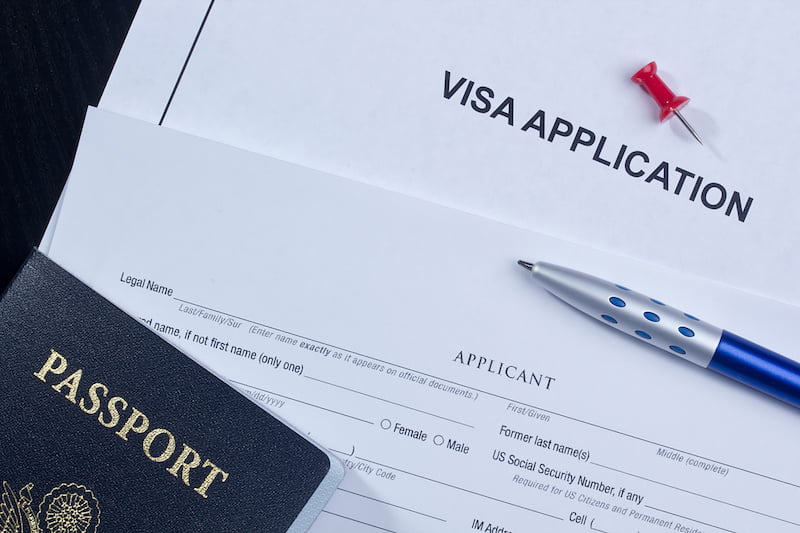Are you considering moving to the United States for work opportunities? Depending on the type of work you plan to do, a U.S. investor visa might be the best visa for you.
This article will go over the different types of EB-5 investor visas available to immigrants coming to the United States.
Editor’s Note: The EB-5 is currently undergoing some turbulence due to litigation and discussion over the minimum investment amounts and the expiration of the EB-5 regional center program. Please consult with an attorney immediately to get the current facts about the EB-5 program, as this article may not be up to date due to the inherently volatile nature of the program over the past few months. Thank you!
What is an Investor Visa?

An investor visa is for people coming to the U.S. who want to invest in a commercial enterprise.
Congress created the EB-5 program in 1990 as a part of the Immigration Act to stimulate the economy. The EB (employment-based) visa system has 5 different preferences that cover professionals entering the country.
Immigrant investors are in the fifth preference, so the category is called EB-5.
Who Qualifies for a U.S. Investor Visa?

Not everyone interested in investment will qualify for a U.S. investor visa. To simplify this decision-making process, consider these three basic requirements.
Investment Requirement
In order to qualify for an investor visa you generally need to invest a minimum amount of $1,000,000 (USD).
However, this amount can be lowered to $500,000 (USD) if you invest in high-unemployment or rural areas that are considered target employment areas.
New Commercial Enterprise Requirement
In order to apply for an EB-5 visa, you also need to make sure you invest in a "New Commercial Enterprise." Businesses qualify as new commercial enterprises in two broad cases:
- The enterprise was established after November 29, 1990; or
- The enterprise was established on or before November 29, 1990 and either (1) has recently been restructured significantly, or (2) will see a 40% increase in revenue or employee count due to your investment
Basically, for your business to qualify as a new commercial enterprise you must either create it from scratch or significantly change an older one.
Job Creation Requirement
The last broad requirement in the EB-5 investor visa process states that your enterprise must create at least 10 full-time positions for new employees.
This can be done in two ways, though one is much easier and more common than the other.
One option is to create and manage your enterprise yourself. If you choose this method, you are required to directly create 10 new full-time positions in your business.
The second and much more common option is to invest your capital into a business called a Regional Center.
If you choose this route you can benefit from both direct (jobs created inside your business) and indirect ( jobs created outside of your business to support it) job creation.
This second method is so much more common that around 95% of EB-5 applicants choose to invest their money in a Regional Center.
Types of U.S. Investor Visas

Depending on the type of investment and the types of job creation you want to focus on in your business plan, you will have to choose between several different EB-5 visas:
- The C5 U.S. investor visa requires $1,000,000 in capital and the creation of 10 direct jobs. This is for direct investments in any general business.
- The T5 U.S. investor visa requires $500,000 in capital and the creation of 10 direct jobs. This is for direct investments which occur in a targeted rural or high unemployment area.
- The R5 U.S. investor visa requires $1,000,000 in capital and the creation of 10 direct or indirect jobs. This is for any general investment in a Regional Center.
- The I5 U.S. investor visa requires $500,000 in capital and the creation of 10 direct or indirect jobs. This is for Regional Center investments that focus on a targeted rural or high unemployment area.
How to Apply for an Investor Visa

The application process generally takes between one to one and a half years. Make sure you give yourself enough time to obtain your conditional green card.
Filing a Petition, Filling out Forms, and Paying Fees
To begin the application process, you will file an I-526 petition. If you are filing from abroad through the U.S. consular office, this process will take about 6 months.
If you are filing in the United States, expect to wait an extra 6 months for approval of your adjustment of status application and background check.
The applicant will also fill out form DS-261, the DS-260 or the I-485 with the National Visa Center (NVC) through U.S. Citizenship and Immigration Services (USCIS) and pay the relevant fees.
If you are working with an attorney, the NVC will not ask you to fill out DS-261.
Once all the proper forms go through consular processing and the NVC, investors can expect to receive their green card within a few weeks.
Investor Visas for Families
Your spouse and any unmarried children under the age of 21 can apply for a visa with you.
Other Types of Visas
There are many different types of visas, and if you can't qualify for an EB-5 visa you might want to look into one of the other types.
Within the EB program, there are 4 other preferences besides the EB-5 U.S. investor visa:
- The EB-1 visa is for workers with extraordinary ability such as nationally and internationally acclaimed professors, researchers, athletes, executives, and managers.
- The EB-2 visa is for workers with advanced degrees or exceptional abilities in the sciences, arts, or business. This visa is for advanced professionals in a field that, while experienced, are not generally well known.
- The EB-3 visa is for skilled workers and professionals. These workers generally have at least two years of experience working in their field.
- The EB-4 visa is for special cases such as religious workers or immigrants who have significantly aided U.S. operations abroad. This can include workers such as translators and international peace workers.
Choosing which visa to apply for can be hard. For this reason we recommend getting help from an attorney who can help you navigate the paperwork involved.
Your attorney can also offer expert advice on how to put together a successful application.
Conclusion

The EB-5 immigrant investor visa is for people who are interested in investing a significant amount of money in U.S. businesses.
While this is a complex process, it is one effective way to get permanent residency in the U.S.
For this reason, you might want to consider hiring an experienced attorney that can make sure your application process goes smoothly.

